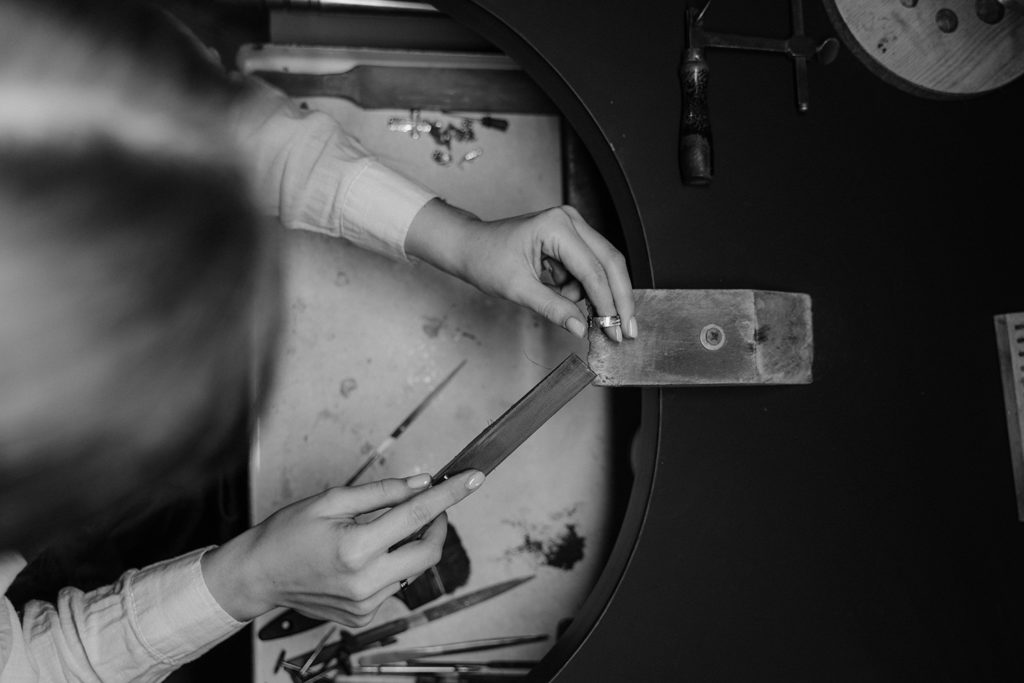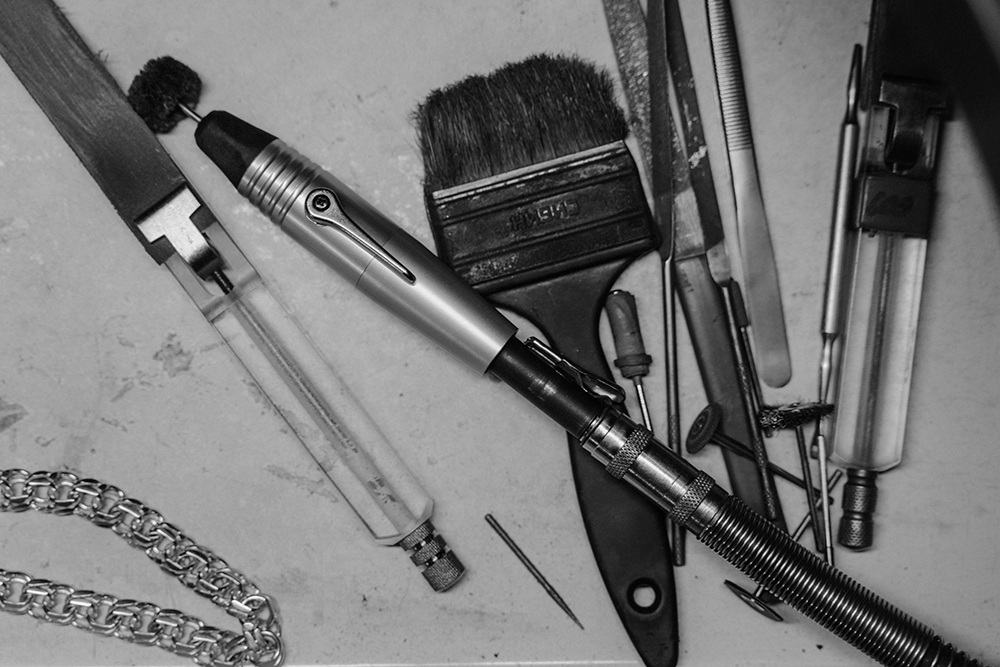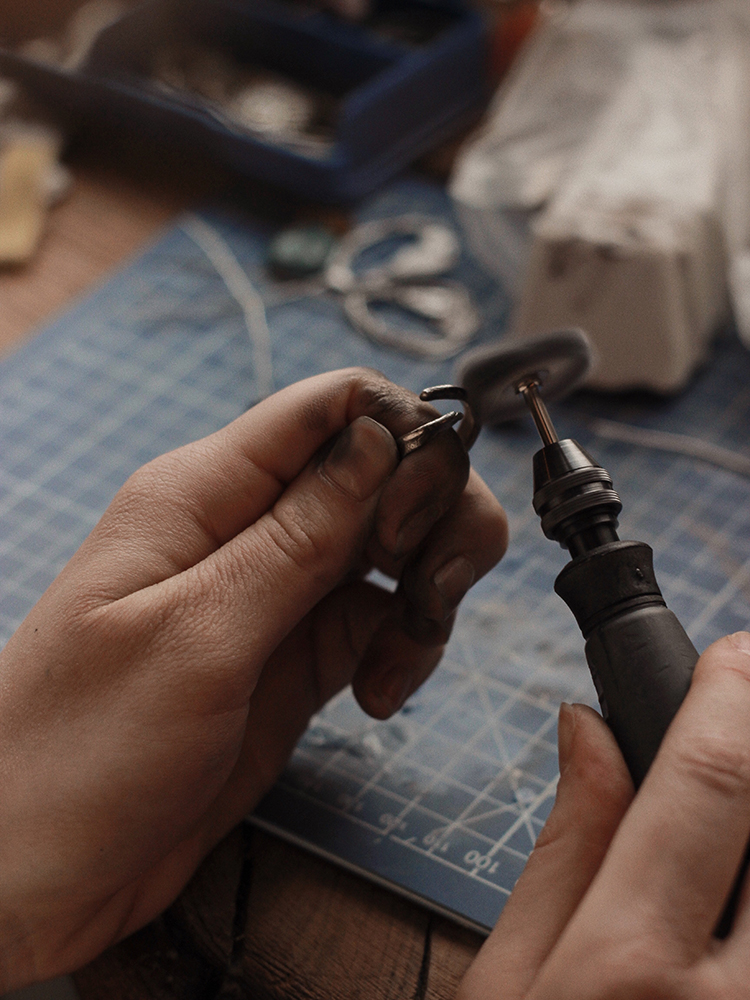At the Bench: Setting & Finishing Tips
Sponsored Content
Take Setting up a Notch
If you’ve ever struggled to hold and set martini studs, there’s a simple tool modification that can help ease the process.
Paul Schaaf, a master jeweler and the owner of Schaaf Designs LLC in Phoenix, once struggled with securely holding martini studs while he notched the settings and bent the prongs. “Because [the prongs in a martini setting] don’t have an ‘opposite’ prong to rest against, you either have to use a pusher and push the prong over or risk resting pliers on the undergallery opposite the prong,” he says. While there is a jig designed for this purpose, Schaaf has never been a fan of it. Instead, he found his own solution that simplifies the process, which he recently shared on his YouTube channel.
He took an old #30 handpiece chuck that he had on hand. Using a second handpiece, he notched the jaws on the chuck all the way around to a depth of about 1.5 mm. He also ground a divot in the top of the jaws. “That leaves room for the chuck to grab the stud and for it to clear the stone’s pavilion,” he explains. He then cut a groove around the top of the chuck so that he can firmly hold onto it and stop it from spinning.
To use, he inserts the martini setting into the chuck. He checks the stone to make sure it rests on top of the undergallery. He then uses a setting bur to notch all three prongs at the same height. Once he’s confident in the fit, he uses parallel pliers to give each prong a small bend before snapping the stone into place. To secure the stone, he uses his pliers to bend them the rest of the way over the stone. This is where the notch comes in handy.
“It gives me the ability to rest my pliers on that notch and start to pull the prongs over,” he says.
Ready to Roll
To finish the inside of rings and other small areas, many jewelers make their own sandpaper rolls. They’re often simple creations, featuring a rod with a slot in it that a jeweler inserts sandpaper through and then rolls up to use. While inexpensive to make, that method always seemed a bit inefficient to Steve Cook of Moser Jewelers in Tipton, Indiana.
“Generally, with those rolls, you have to take them out of your handpiece and replace it with something else,” he says. Wanting something more efficient, he was inspired by his previous experience working in a tool shop, where they would wind sandpaper strips around a rod in the drill press chuck, using the rotation to keep the paper tight. “I decided to adapt it for the jeweler’s bench.”
Cook cuts a 2 inch wide strip of wet/dry carbide sanding paper. To force the strip into a rolled form, he drags it over a sharp edge, similar to curling ribbon with scissors, creating a spiral. To get it closer to the ultimate diameter that he needs, Cook rolls it into a tight roll. He then wraps a rubber band or piece of tape around it to keep it tightly rolled before dropping it into a glass filled with alcohol. “Soaking the fibers with alcohol allows it to maintain the shape,” he explains.
Once the sandpaper is dry, it’s ready for use. Cook simply slips it over the threaded portion of his handpiece so that when he turns it on, the roll tightens and is ready for use. When the motor stops, the roll loosens and self-releases. “That’s the trick,” he says. “This saves the effort of taking the whole assembly out of the handpiece. All I have to do is slide one roll off and one roll back on.”
These tips originally appeared in MJSA Journal, which is published monthly by Manufacturing Jewelers & Suppliers of America, the trade alliance dedicated to professional excellence in jewelry making and design. To read articles from the latest issue and sign up for a free trial subscription, go to mjsajournal.online.








